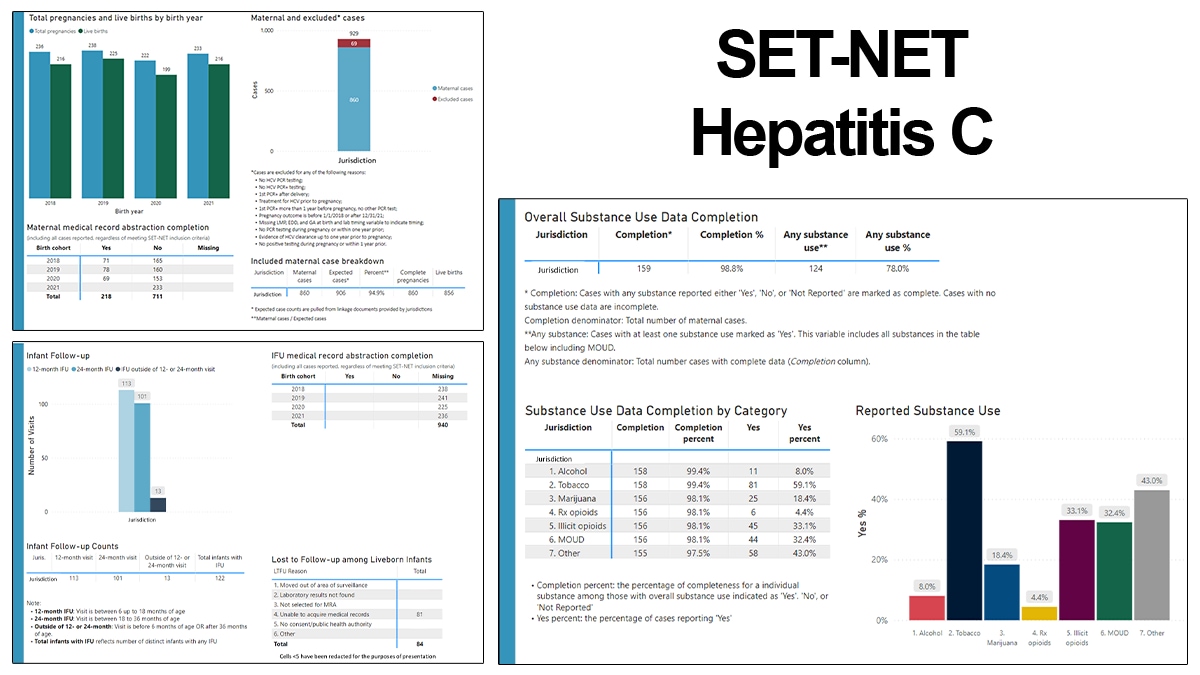At a glance
In 2023, CDC made data and visualizations available at state, tribal, local and territorial (STLT) levels for the Surveillance for Emerging Threats to Mothers and Babies Network (SET-NET) program.

Why the effort matters
Visualizing and sharing insights to inform public health action is a primary public health data goal. A milestone in the 2023 Public Health Data Strategy was to expand public access to data and visualizations.
In 2023, CDC made maternal and infant health-related data, visualizations and automated tools available for public health jurisdictions. These data were shared through the Surveillance for Emerging Threats to Mothers and Babies Network (SET-NET) program.
State, tribal, local and territorial (STLT) level data became available along with automated key data submission and validation processes. This accelerated the ability to expand the SET-NET program to new and emerging conditions, enabling greater response-readiness.
It also reduced the time required for CDC program analysts to validate data entering CDC and to create and share dashboards. And it enabled STLTs to identify problems with the data and maternal and infant health-related trends within their jurisdictions.
Key outcomes
Thirty-six partners across 12 jurisdictions have accessed automated dashboards and used the information to develop plans for public health action. More than 16 data assets and dashboards have been developed and shared with jurisdictional partners.
Now in less than an hour, a single CDC program analyst is able to update, package and share datasets/dashboards with jurisdictions. In early 2023, it took five CDC program analysts three to four days to accomplish this same task.
